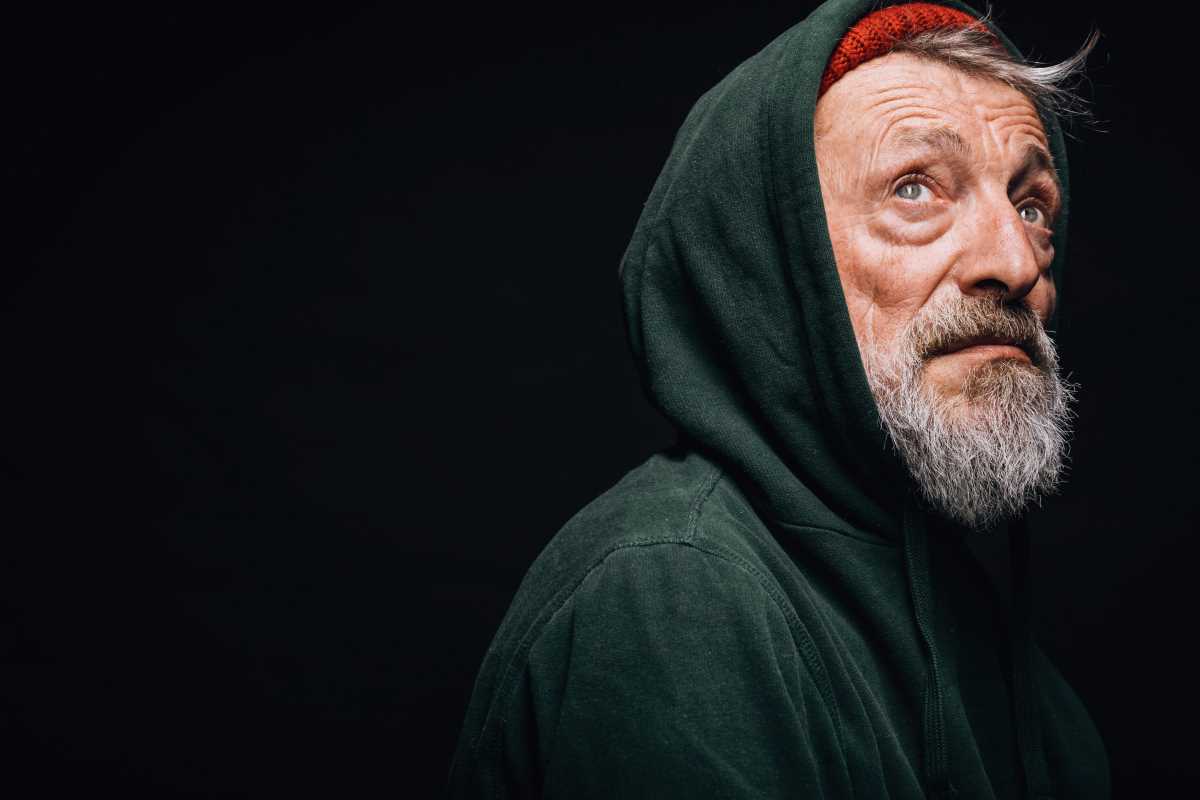Have you seen the stains on the streets of the city? Have you witnessed the steel spikes rising from the sidewalks or seen the sharp edges dividing public benches, deterring heads from rest and minds from solace?
There is a war here, in your backyard.
It is not as different from wars of the past as it may seem. This is a war over power and territory – one where those most embattled bear visible scars. It is the combat of the homeless crisis. As has been the case through many historical battles, the largest percentage of people on the front lines are men.
When discussing homelessness, we frequently get enraptured by statistics, and we forget to give those numbers a face. The truth here in America is that if homelessness did have a face, it would be that of a male.
Men account for somewhere between 70% and 84% of all homeless people. This number has not been adjusted in any way. It reflects the universal conditions of homelessness – sheltered and unsheltered, married and single, regardless of race, religion, or age. The fact that this insight is rarely shared publicly is a huge part of the problem.
When you consider that less than half of the US population is male, it’s easy to see how such a gross overrepresentation could become problematic. If left unaddressed, the result might even be devastating.
The Importance of Honest, Accurate Reporting as it Relates to Available Services
While the general modern narrative does not depict males as victims, the homeless crisis serves as one example of how men have also fallen by the wayside under the scope of the latest brand of toxic capitalism. As in most wars, there are no real winners. There are just sides that lose and sides that lose a little more.
Here are some underreported stats that shed a little light on our brethren who are struggling to survive unhoused:
- Men account for at least two-thirds of the overall homeless population in the United States
- 84% of all homeless men are single males ranging in age from 25 to 54 years old
- Homeless men are statistically more likely to be denied shelter
- Due to the point above, the majority of people experiencing the horrid conditions of unsheltered homelessness are also male
- In youth homelessness, males were statistically more likely to be robbed or physically assaulted than females. This does not include cases of sexual assault where female victims were more susceptible to heinous crimes
With These Statistics Rarely Coming to Light, Single Males, Who Make Up the Overwhelming Majority of Homeless People, Often Lack the Resources to Overcome Their Situation
The COVID-19 Crisis illustrated how public opinion shapes political policy. This is the reason why distorted or underreported information is so dangerous. Suppose the general public doesn’t view members of the male population as victims of homelessness or, on a larger scale, victims of anything. In that case, this large population of unhoused citizens will remain underserved.
As it stands, homeless men are far less likely to qualify for emergency shelter when compared to their female counterparts. Single fathers with children bear the burden of finding a shelter that accepts single men and their offspring. Finding a suitable shelter is so rare that many are forced to remain on the streets, in hotels, vehicles, or cycling in and out from some combination of the above.
This is just one example of how this lack of resources adversely affects our youth. Disparities also exist for male victims of domestic violence, many of whom flee from their violent intimate partners only to learn that the local community resources are for women alone. This is a shocking revelation when we consider that one in seven men are now categorized as domestic violence victims.
Causes of Homelessness that Disproportionately Affect Men
The top three causes of homelessness are the same for everyone experiencing homelessness. They continue to be:
- Lack of affordable housing
- Unemployment
- Poverty
*Please note that wealth inequality is an active driver of all three of these conditions, and wealth inequality has deepened significantly since the onset of the pandemic.
Below are some other causes that contribute to homelessness and disproportionately affect male members of our population:
- Veteran status
- Accelerated rates of incarceration
Men account for 90% of all convicts nationwide. This number reflects an oft-overlooked disparity. Studies show that men are twice as likely to be incarcerated when charged with the same crime, and their sentences were, on average, 63% longer.
This increased risk for incarceration significantly raises the risk for homelessness. Housing advocates are well aware of the housing stability pitfalls formerly incarcerated individuals face.
Equally important here is veteran status. In brief, men are more likely to become soldiers, and soldiers are twice as vulnerable to homelessness as the rest of the general population.
As mentioned above, this is a war and one that is claiming lives at unprecedented rates.
Did you know that violent crimes against members of the homeless population just hit an all-time high?
We are officially living in post-pandemic times. We are all walking into uncharted territory and an unpredictable economy. The mask we don today are masks of willful ignorance. The least we can do is arm ourselves with accurate information that will aid us in the fight against homelessness. This is the only suit of armor that can work.
Now that we have identified a massive subset of the homeless population as male, we must find solutions that cater to this specific demographic, just as we have for other demographics in similar conditions.











